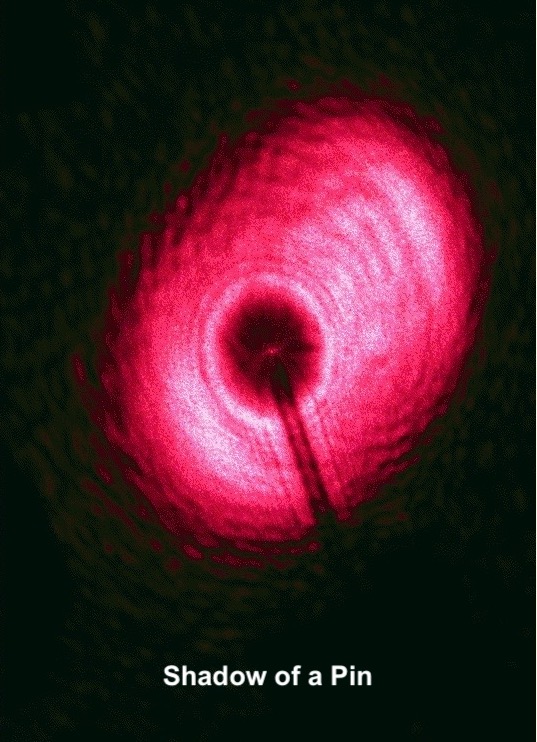DOBLANDO LA LUZ – DIFRACCIÓN
DOES LIGHT ALWAYS MAKE A SHARP SHADOW WHEN IT IS BLOCKED BY AN OBJECT? WHAT HAPPENS WHEN LASER LIGHT PASSES AROUND A THIN HAIR? CAN YOU USE THE PATTERN OF DARK AND BRIGHT SPOTS TO MEASURE THE DIAMETER OF THE HAIR?
The calculations in this lesson require that students understand and can manipulate numbers in scientific notation. The qualitative activities- looking at diffraction fringes- can be enjoyed by students of all ages.
MATERIALS:
Activity 1: Laser pointer, sewing pin with a “ball” head, spring-type clothespins as needed to hold everything in place
Activity 2: Laser pointer, narrow “slit” made in painted glass slide or aluminum foil with a single edge razor or craft knife (see specific instructions), spring-type clothespins as needed to hold everything in place
Activity 3: Two pencils
Activity 4: Laser pointer, tape, a hair at least 3 cm long, spring-type clothespins to hole everything in place, ruler, calculator. This activity requires calculations (unless you just want to look at the fringe pattern)
All these activities are done in a darkened room. Be sure to talk about laser safety first (keep lasers on the table when on, no waving beams around the room).
STUDENT INSTRUCTIONS AND TEACHER NOTES
PowerPoint slides with student instructions Bending_Light-Diffraction_Slides.pptx
Presentaciones de PowerPoint con instruacciones para estudiantes Bending_Light-Diffraction_Slides.pptx
Diffraction Teacher Notes Bending Light-Diffraction_Teacher_Notes
Handout for recording observations and data Bending_Light-Diffraction_Observations
VIDEO: Viewing the Diffraction Pattern of a Pin at Home
VIDEO: Measuring Hair Diameter by Diffraction
VIDEO: Measuring Hair Diameter by Diffraction (early version with typical math errors)
